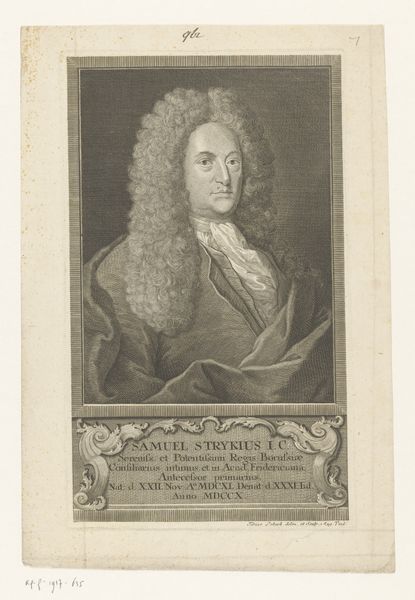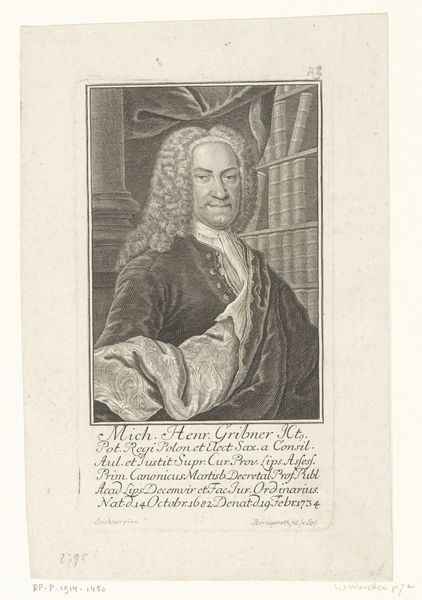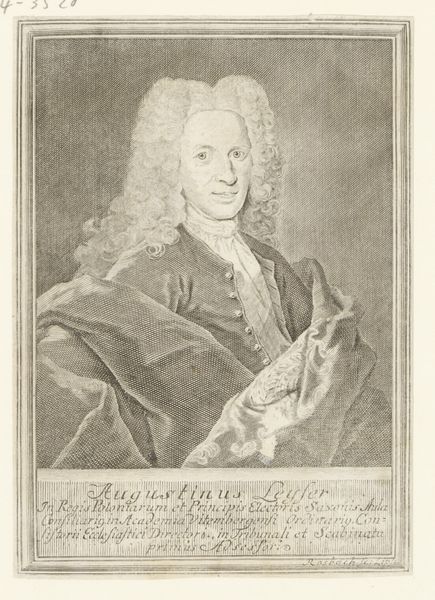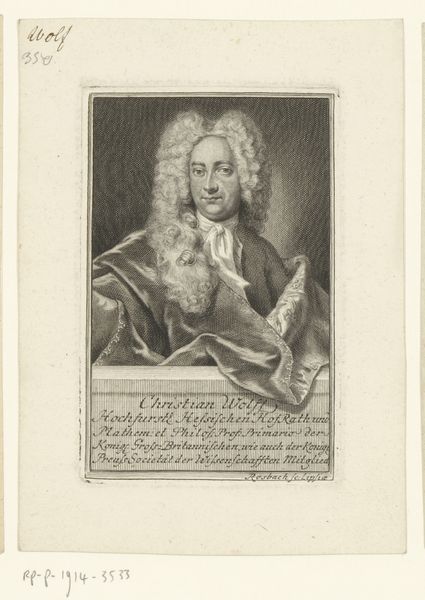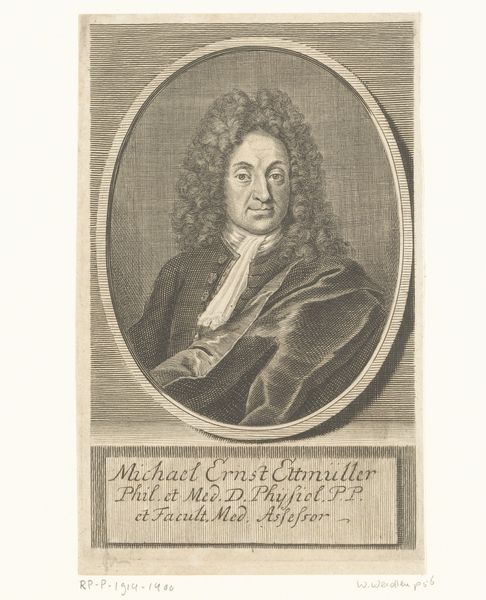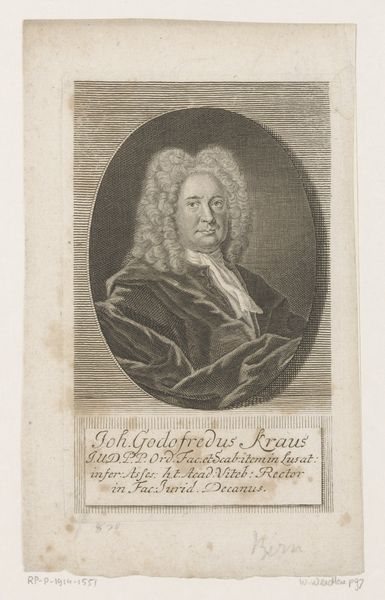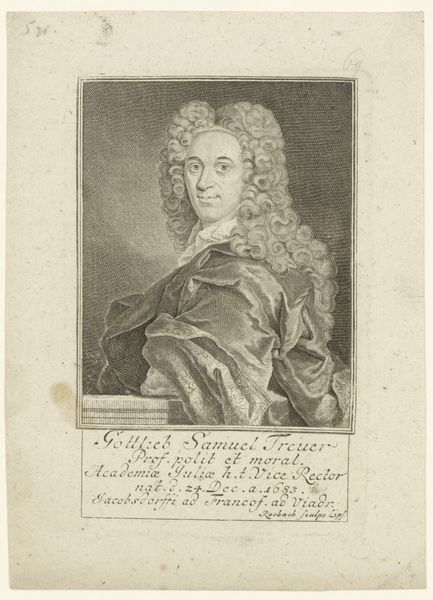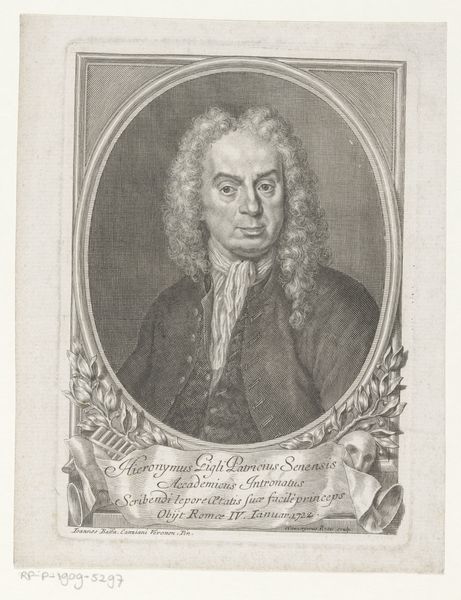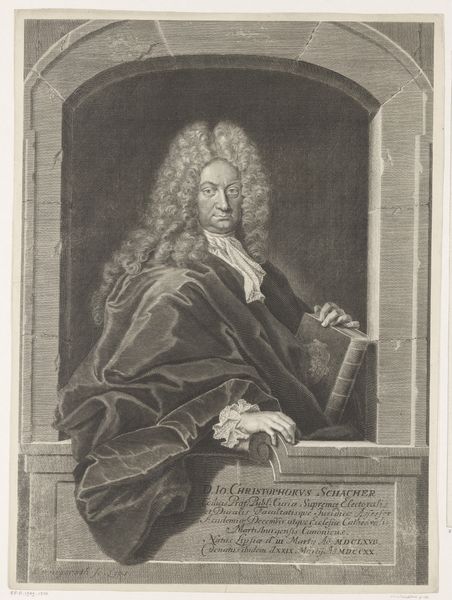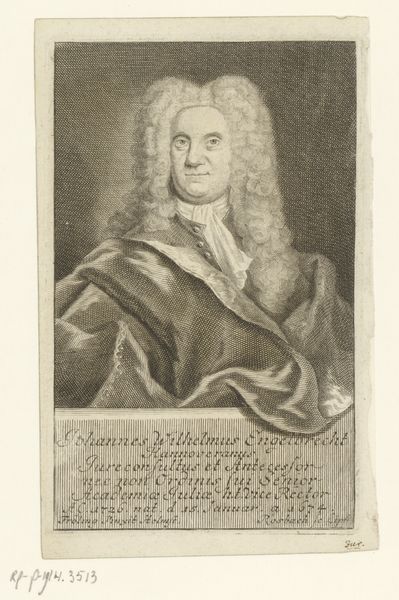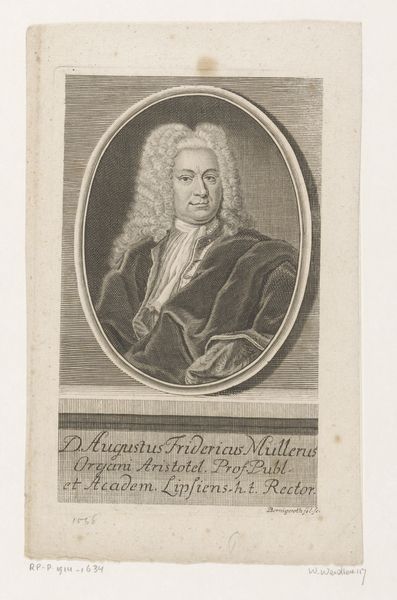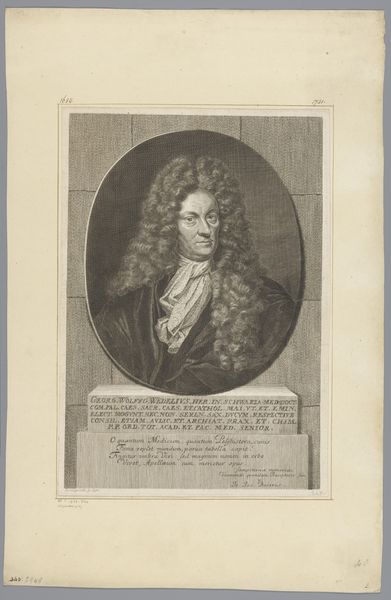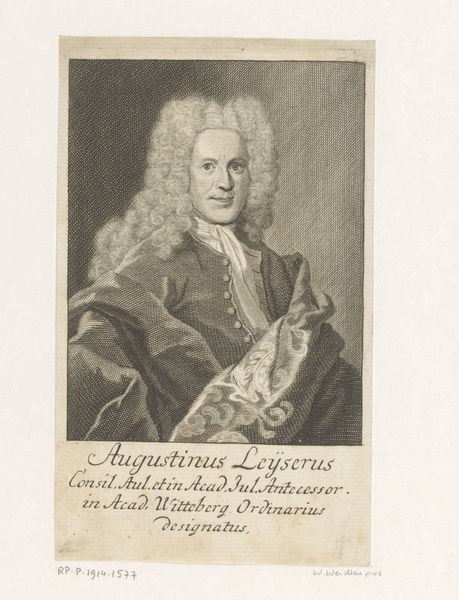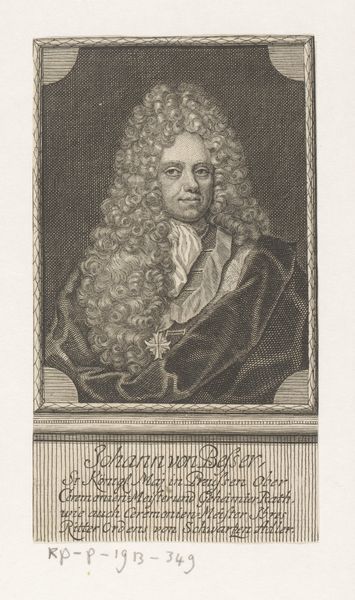
paper, engraving
#
portrait
#
aged paper
#
baroque
#
yellowing background
#
old engraving style
#
paper
#
line
#
engraving
Dimensions: height 183 mm, width 133 mm
Copyright: Rijks Museum: Open Domain
Curator: This engraving, currently held at the Rijksmuseum, presents "Portret van Augustin Leyser." The artwork is attributed to Johann Friedrich Rosbach and is dated somewhere between 1700 and 1749. It’s a fascinating example of Baroque portraiture in the line style, rendered on paper. Editor: My first thought? Melancholy. The man’s expression, combined with the aged paper, creates a wistful atmosphere. There's something incredibly delicate and fleeting about it, like a memory fading at the edges. Curator: Absolutely. The sitter's gaze does seem laden with a sense of gravity. Considering the context, it's relevant to remember the immense social and political upheaval occurring during that era. Aristocratic portraits functioned not merely as representations but also asserted power structures and lineage, negotiating delicate sociopolitical realities. Editor: You can almost smell the ink, hear the scratching of the engraver’s tool, imagine the dust motes dancing in the candlelight of the studio... Rosbach’s attention to the swirling wig and the drape of fabric, especially, suggests an intimate process of observation. Curator: True. And when we analyze the material reality—the line engraving technique itself—we begin to grasp its intended audience. Engravings were often produced as reproduction tools. Meaning, it’s more than just a memento of an individual. Editor: It makes you wonder, doesn’t it? About all the hands it passed through. Was it displayed proudly, hidden away, forgotten? The lines etched into that paper connect us to that moment, those people. It becomes more than just a historical document. Curator: Indeed, exploring this artwork, it highlights broader intersectional themes within its historical and political context, it transcends simple visual appeal. Editor: Looking at the aged paper now, it's more than an object—it's like holding a whisper from the past. It almost urges you to make something new.
Comments
No comments
Be the first to comment and join the conversation on the ultimate creative platform.
